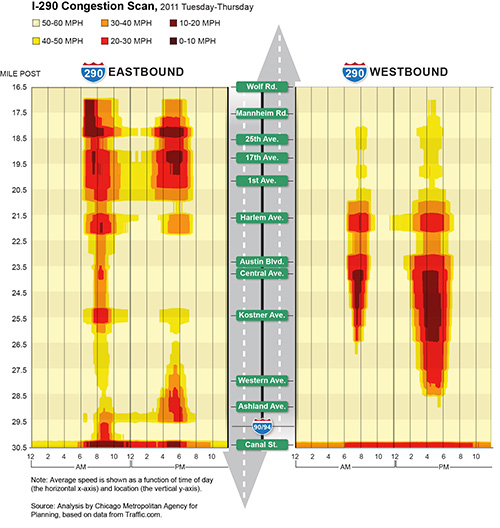Congestion is a significant problem in our region. Decreasing the associated costs and negative impacts will require effective strategies for managing and reducing congestion throughout the transportation system.
The Congestion Management Process (CMP) is the name used nationally to describe an ongoing, systematic method of managing congestion that provides information about both system performance and potential alternatives for solving congestion-related problems. Addressing the costs of congestion is a recurring topic in the comprehensive regional plan GO TO 2040, which calls for congestion management measures as a part of strategically investing in the region's transportation system.
CMAP's use and continual development of a regional CMP will help advance the quality of life and mobility goals described in GO TO 2040. An important outcome of the CMP is a careful investigation of strategies that either directly reduce congestion or mitigate its effects by addressing related issues, such as air quality. From this, specific strategies can be selected and implemented in order to reach long term objectives set out by CMAP.
In order to be effective, the CMP incorporates extensive monitoring of the transportation network through the use of performance measures, many of which are also tracked as regional indicators. This use of data helps provide CMAP and regional decision-makers with a clear analytical understanding of congestion in northeastern Illinois. Among other key congestion indicators, CMAP maintains freeway performance metrics and congestion scans for each segment of limited access highway in the region; a sample congestion scan is posted below.
Establishing a CMP is required by federal legislation and is governed by recently updated federal guidelines. Legislation requires that any federally-funded transportation project that significantly increases the capacity for single-occupant vehicles in our area has to be derived from a CMP.
